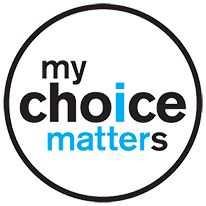KNOW THE FACTS
PRESCRIPTION STIMULANTS (Adderall or Ritalin)

A. Prescription drugs are often strong medications, which is why they require a prescription from a medical professional in the first place. When they are misused, they can be just as dangerous as drugs that are made illegally. Even when they are not misused, every medication has some risk for harmful effects, sometimes serious ones. Doctors consider the potential benefits and risks to each patient before prescribing medications and take into account a lot of different factors, described below. People who abuse drugs might not understand how these factors interact and put them at risk.
- Personal information. Doctors take into account a person's weight, how long they've been prescribed the medication, and what other medications they are taking. Someone misusing prescription drugs may overload their system or put themselves at risk for dangerous drug interactions that can cause seizures, coma, or even death.
- Form and dose. Doctors know how long it takes for a pill or capsule to dissolve in the stomach, release drugs to the blood, and reach the brain. When misused, prescription drugs may be taken in larger amounts or in ways that change the way the drug works in the body and brain, putting the person at greater risk for an overdose.
For example, when people misuse OxyContin, a dose that normally works over the course of 12 hours hits the central nervous system all at once. This effect increases the risk for overdose. - Side effects. Prescription drugs are designed to treat a specific illness or condition, but they often affect the body in other ways, some of which can be dangerous. These are called side effects. For example, OxyContin stops pain, but it also causes constipation and sleepiness. Stimulants may increase a person’s ability to pay attention, but they also raise blood pressure and heart rate, making the heart work harder. These side effects can be worse when prescription drugs are not taken as prescribed or are misused in combination with other substances—including alcohol, other prescription drugs, and even over-the-counter drugs, such as cold medicines. For instance, some people mix alcohol and depressants, both of which can slow breathing. This combination could stop breathing altogether.
Also known as: Skippy, The Smart Drug, Vitamin R, Bennies, Black Beauties, Roses, Hearts, Speed, or Uppers
Prescription stimulants increase—or "stimulate"—activities and processes in the body. This increased activity can boost alertness, attention, and energy. It also can raise your blood pressure and make your heart beat faster. When prescribed by a doctor for a specific health condition, they can be relatively safe and effective. However, dependence and addiction are still potential risks when taking prescription stimulants. These risks increase when these drugs are misused. Taking someone else's prescription drugs or taking the drugs to get “high” can have serious health risks.
There are two commonly misused types of stimulants: amphetamines (e.g., Adderall) and methylphenidate (e.g., Ritalin). In the past, stimulants were used to treat a variety of conditions, including asthma and other breathing problems, obesity, and health problems that affect your nervous system. Now, because the risk for misuse and addiction is better understood, doctors prescribe them less often and only for a few health conditions. They are still prescribed for attention deficit hyperactivity disorder (ADHD), narcolepsy (a sleep disorder), and, in some instances, depression that has not responded to other treatments.
Stimulants
- Amphetamines (Adderall and Dexedrine)
- Methylphenidate (Ritalin and Concerta)
Conditions They Treat
- ADHD
- Narcolepsy (sleep disorder)
- Depression
Prescription stimulants are normally taken in pill form, but some people who misuse them to get "high" crush the tablets and snort or inject them. This can be dangerous because ingredients in the tablets can block small blood vessels, damaging the heart and other organs.
Some teens are prescribed stimulants to manage their ADHD. But if they share their medication with friends, it is considered misuse. People misuse stimulants by taking them in a way that is not intended, such as:
- Taking someone else’s prescription stimulant medication.
- Taking a prescription stimulant medication in a way other than prescribed.
- Taking the prescription stimulant to get high.
- Mixing them with alcohol and certain other drugs. A pharmacist can tell you which drugs are not safe to mix with stimulants.
Stimulants have been misused as an "academic performance enhancer," (for example, to stay awake all night to cram for an exam). However, studies have found that stimulants do not increase learning or thinking ability when taken by people who have not been diagnosed with a medical condition like ADHD.
The brain is made up of nerve cells that send messages to each other by releasing chemicals called neurotransmitters. Common stimulants, such as amphetamines and methylphenidate, have chemical structures that are similar to certain key brain neurotransmitters including dopamine and norepinephrine. Stimulants boost the effects of these chemicals in the brain and body.
When doctors prescribe stimulants for a medical condition, they start with low doses and increase them slowly until they find the dose that works best. However, when taken in amounts or ways other than prescribed, like snorting or injecting, stimulants can increase the dopamine in the brain very quickly. This changes the normal communication between brain cells, producing a ‘high’ while also increasing the risk for dangerous side effects. Over time, this can lead to addiction, which is when you continue to use the drug despite negative consequences.
Stimulant use can have side effects, even when prescribed by a doctor. Misusing them can be especially dangerous. Taking high doses of a stimulant can cause:
- increased blood pressure
- irregular heartbeat
- dangerously high body temperatures
- decreased sleep
- lack of interest in eating, which can lead to poor nutrition
- intense anger or paranoia (feeling like someone is going to harm you even though they aren’t)
- risk for seizures and stroke at high doses

